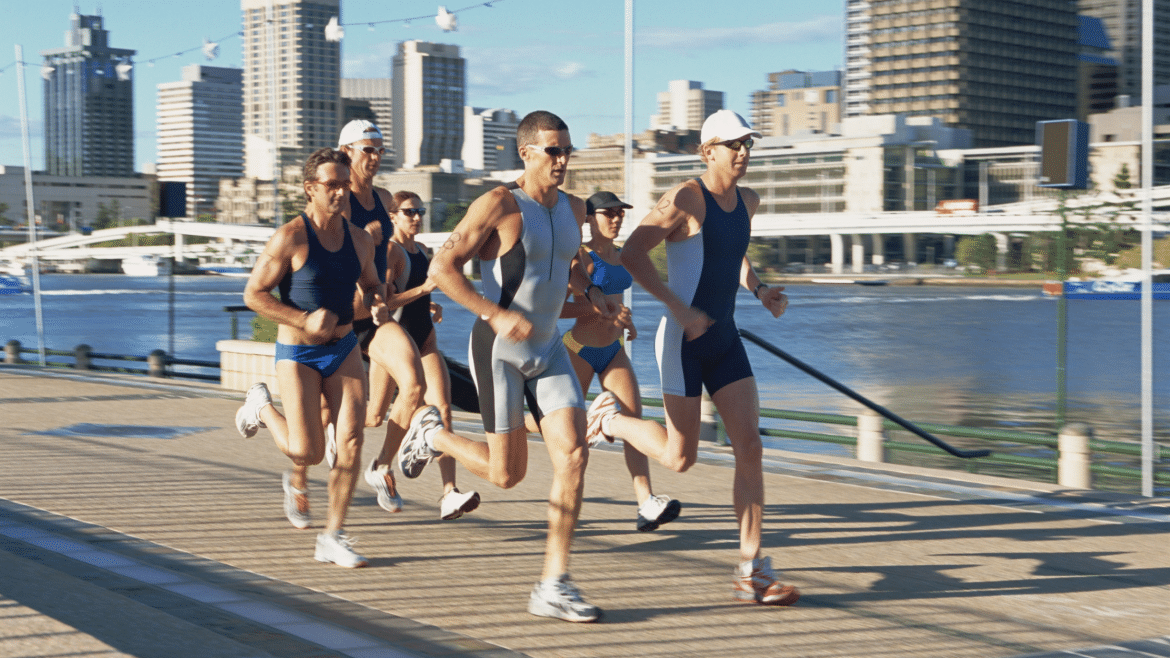 Jun
01
Jun
01
Triathlon Shoe Guide: Do You Need Different Shoes for Each Leg of a Triathlon?
- 1 June 2025
- 0 Comment(s)
There’s nothing quite like race day for a triathlon. The early-morning chill, the nerves at the swim start, the clatter of bikes, and that mental prep before the run, it’s a rollercoaster. You’re pushing your body through three tough disciplines, back-to-back, with barely a breath in between. And through it all? Your shoes are doing more work than you might think. They’re not just there for comfort; they help you move better, transition faster, and stay focused on the finish. Many athletes wonder, “Do I need different shoes for a triathlon?” It’s a solid question, and the answer is yes. But not just for the sake of more gear. It’s about understanding the unique demands of each leg and equipping yourself accordingly. This triathlon shoe guide breaks it down in a simple way, so your feet and your finish time are fully covered.
Triathlon Disciplines and Footwear Needs
Swimming, cycling, and running are three stages in a triathlon. During swimming, you don’t need shoes. However, once you transition to the bike and then the run, shoes become a game-changer. Your feet, along with your body, will feel extra pressure during each stage.
Considering running shoes may not serve you well on a bike, and the same applies to a pair of biking shoes. Discomfort, blisters, and muscle strain are all results of wearing the wrong footwear. The wrong choice can even cause you to drop out of the race. That’s where a well-planned triathlon shoe strategy comes in.
How to Choose the Right Triathlon Shoes?
Cycling Shoes
Now, your triathlon cycling shoes are a whole different beast from your everyday road shoes. They’re built with one thing in mind: speedy transitions and max power output. Here’s what makes triathlon bike shoes stand out:
- Quick-entry design: Most tri-specific shoes feature wide openings and handy heel loops, allowing you to slip them on with wet feet, with no drama or delay.
- Velcro straps: Typically, there are just one or two, designed to close quickly and efficiently. Some even open away from the chain side to avoid snagging.
- Ventilation and drainage: Yes, these shoes are designed to drain water quickly and allow air to flow, because soggy feet are no one’s friend.
- Stiff soles: These increase power transfer with every pedal stroke. When your legs are grinding out those miles, efficiency matters.
Your cycling shoes should feel snug but not tight, secure yet not constrict circulation. If your feet go numb mid-race, that’s a huge red flag.
Running Shoes
After your ride, it’s time to tackle the final grind: the run. Your legs will not be thrilled. That’s where your triathlon running shoes need to do some heavy lifting.
What makes a good triathlon running shoe?
- Sockless comfort: Many triathletes opt for sockless comfort for speed. Your shoes should have seamless interiors or extra lining to prevent rubbing against your skin.
- Elastic laces: You’re not stopping to tie anything. Slip-on, go-time laces help you hit the ground running, literally.
- Breathable & fast-drying materials: Coming off a sweaty ride (and a wet swim), your feet need shoes that won’t turn into steam rooms.
- Lightweight with solid grip: Cushioning is essential, especially when your legs feel like lead. But you don’t want anything bulky.
Transition Strategies
You’ve got the shoes, but transitions are where triathlons are won and lost. It’s not just about speed; it’s about strategy and setup.
T1 (Swim to Bike)
T1 is where chaos meets precision. You dash out of the water, shed your wetsuit like a pro, and get to your bike setup. Here’s where triathlon cycling shoes earn their keep.
Time-saving tip: Keep your shoes clipped to your pedals and secure them with small rubber bands. When you mount your bike, start pedalling barefoot and slide your feet in as you go. It might sound advanced, but with practice, it becomes second nature.
T2 (Bike to Run)
T2 is brutal. Your legs are toast, your body’s confused, and your brain is screaming, “Why are we doing this again?”
That’s where your triathlon running shoes need to be prepped and ready. Set them up with wide openings and elastic laces. If you’re sockless, use a dab of anti-chafing cream around the heel and toe box. Some athletes even use cooling towels or ice packs at their stations to beat the heat before the final run.
The Bottom Line of This Triathlon Shoe Guide
So, do you need different shoes for a triathlon? Absolutely yes.
The right triathlon cycling shoes and triathlon running shoes aren’t just about comfort; they’re about performance, transition efficiency, and injury prevention. Trying to save time or money by using one pair for both legs? That’s like using a butter knife to chop onions; it’ll sort of work, but it’ll hurt and take forever.
Dial in your transitions. Practice your shoe setup. And when race day hits, you’ll thank yourself for going the extra mile with the right gear.
And one last tip, style matters. You want your gear to perform, but looking the part never hurts. For instance, TD Sportswear crafts custom triathlon sportswear that matches perfectly with your triathlon shoes, so your kit not only performs well but also looks sharp while doing so.
